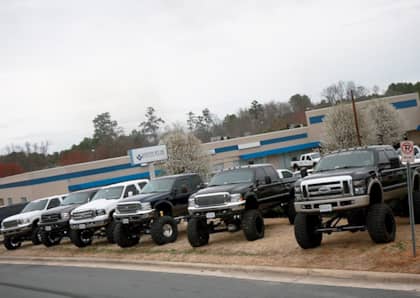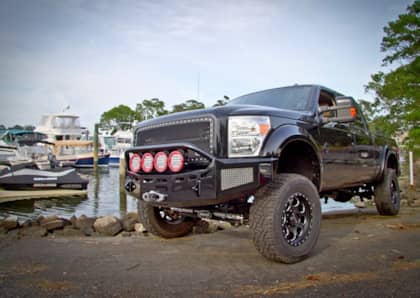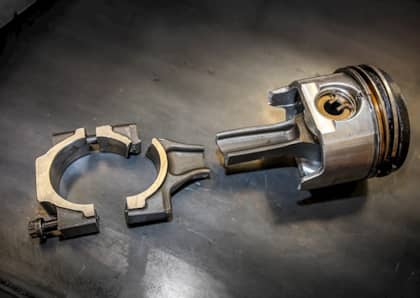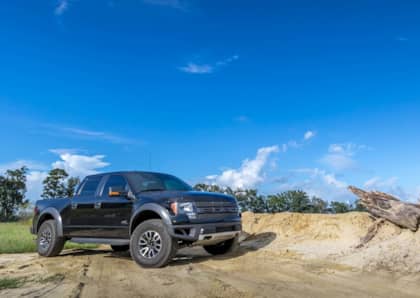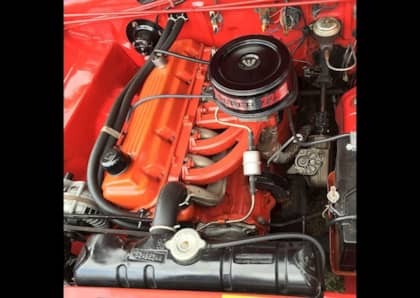Driven: 2017 Ford F-350 Super Duty
Thanks to having the freshest face, the most torque, an aluminum body, a fully-boxed frame, a larger rear axle, higher payload and tow ratings, and debuting a host of never-before-seen gadgetry in the heavy-duty pickup segment, it’s no wonder the ’17 Ford Super Duty is the hottest product leaving Detroit right now.
The 2017 model year marks the most extensive changes made to the Super Duty platform in its 19-year production run — and consumers are chomping at the bit to drive them. Believe it or not, during the early stages of production many buyers didn’t receive their trucks until two or three months after ordering them. While the ’17 Super Dutys were never officially on “back order,” you certainly had to wait your turn to get one.
For the better part of four months, we’ve had the pleasure of climbing aboard a ’17 long bed, crew cab F-350 Platinum — Ford’s top-of-the-line, highly sought after trim level — for testing purposes. From the smooth, 6.7L Power Stroke (now packing 925 lb-ft of twist) to its super-sized running gear, and the F-150 influence to its newfound technological marvels, this bumper-to-bumper coverage spells out everything we like about the ’17 Super Dutys.
Read on to find out what life is like behind the wheel of the most capable one-ton to ever hit the truck market.
F-150 Styling, Super Duty Where It Counts

Following the aluminum-constructed body Ford pioneered on its F-150, the ’17 Super Duty rocks aluminum sheetmetal now, too — and the cab even shares the same basic architecture as its half-ton brother. However, the Super Duty cab is noticeably deeper, which is most apparent once you discover all the available leg room inside.
As for the bed, its aluminum makeup is 14 percent thicker than what you’ll find on F-150 models. Our test mule is fitted with the factory Tough Bed spray-in bed liner for ultimate protection (a $495 option from Ford). We’ll also note that ’17 trucks sit higher than the previous generation as well (’11-‘16), making the power-deployable running boards, a standard option on all Platinum models, all the more warranted on our F-350.
Adaptive Steering!

This is what life looks like behind the wheel of a $79,000 Super Duty. We have the luxury of heated (rear heat, too), cooled and massaging leather-trimmed seats on our Platinum model, along with a voice-activated navigation system that’s part of the included SYNC 3 system. However, our favorite interior feature is something that only comes standard on Platinum models: adaptive steering.
Made up of an electric motor, a small computer and a gear unit, all of which are contained in the steering wheel itself, this variable ratio steering feature reduces the amount of rotations required to turn the front wheels. Ford’s adaptive steering is speed-sensitive, and its variability is based on driver input. In the real world, this means our 21-foot long behemoth is a cinch to park. We’ll note that while adaptive steering is exclusively standard on Platinum’s, it can be added to XLT and higher trim levels for $685.
Tow Like a Pro

It’s obvious Ford knows that more than 90 percent of Super Duty customers use their trucks to tow, hence the employment of its Trailer Reverse Guidance system. When using the system, the navigation screen automatically shifts your viewing perspective (by utilizing the two side-view cameras) depending on which way the trailer is being turned.
Trailer Reverse Guidance also provides coaching by recommending the required steering wheel input(s) needed to back up to your trailer (via a dynamic steering wheel icon that’s viewable on the navigation screen). You simply follow the on-screen prompts, and you can’t miss. In addition, a color-coded, bird's-eye diagram of the truck also alerts the driver of jackknife conditions. This type of technology is extremely helpful when trying to back small trailers, which by nature are hard to keep track of behind a large truck.
Tow-Friendly Features

Up to seven cameras can be had on a ’17 Super Duty, and the third brake light unit is extremely useful when attempting to hook onto a gooseneck or fifth-wheel hitch. The navigation screen itself is 8 inches wide, and its touchscreen design is as easy to use as the one on your smartphone.
Another tow-friendly feature we’re quite fond of is the exhaust brake function (top left button, above the navigation screen), which has three different positions on ’17 models: Normal (off), Auto and Full (on). Auto mode allows the truck to adjust its exhaust braking power according to your load requirements. Again, more adaptive technology from Ford, which will literally make each Super Duty drive slightly different.
700+ Mile Range

Gone are the individual gauge pods for turbo boost, coolant temp, transmission temp and fuel; for 2017, all of these vitals reside digitally on the same LCD screen. As for the fuel gauge, our needle moves very slowly considering the Platinum’s long bed configuration allowed us to option the available 48-gallon tank (the largest fuel cell offered from any of the Big Three). Essentially, this means we can travel roughly 700 miles between fill-ups, provided the truck is void of any considerable payload and not hooked to a trailer.
925 LB-FT Power Stroke

Believe it or not, other than the fact that it now packs 925 lb-ft of twist, the 6.7L Power Stroke V8 essentially underwent fewer changes than anything else on the truck for the ’17 model year. Thanks to what likely boils down to a few tweaks in the PCM calibration, Ford squeezed an extra 65 lb-ft out of the 6.7L engine, although peak torque checks in at 1,800 rpm versus the 860 lb-ft available at 1,600 rpm on ’16 models. We suspect that Ford created more torque at a slightly higher engine speed in an effort to reduce the amount of stress placed on the rotating assembly (namely the connecting rods). Horsepower checks in at the same 440 figure and is available at 2,800 rpm.
Unchanged Yet Proven TorqShift

The same basic 6R140 TorqShift automatic remains the sole transmission option on diesel-equipped Super Dutys. We’re 100 percent OK with this, as the six-speed TorqShift has a proven track record, and we’ve even seen it hold up to 700 hp and 1,400 lb-ft of torque in the aftermarket. To keep the 6.7L Power Stroke’s 925 lb-ft of torque from shredding the rear tires, considerable torque management is present in First through Third gear.
Fully-Boxed Frame

This image showcases what is perhaps the biggest news regarding the ’17 trucks’ chassis: a fully-boxed frame. The boxed framerails and high-strength steel provide a 24 percent stiffness improvement over ’16 models, not to mention it’s part of the increased towing and payload capacity equation. To us, the ’17 truck’s lack of frame flex results in a more stable ride when traveling over rough roads at highway speed. Previous generation trucks seemed to become unsettled much easier than our F-350 does.
Dana M275

More capability in the towing and payload categories means burlier supporting components, hence Ford’s use of the Dana M275 rear axle. The 14-bolt unit replaces the 10.5 Sterling for all intents and purposes, although the 10.5 is still available on gas F-250s and F-250 diesel models void of the HD tow package. The M275 features a 10.8-inch ring gear, 4-inch diameter axletubes (vs. 3.5-inch on the 10.5), 36-spline axle shafts (vs. 35 on the 10.5) and can even be equipped with an electronic locker (so long as the 3.55 ring and pinion ratio is selected). Ring and pinion options are limited to 3.31 or 3.55s on F-250 and F-350 models.
The Same, Adequate Brakes

Making use of hydraulic assist brakes, the rotor diameter on our ’17 test mule measures the same as what you’ll find on a ’16 F-350: 14.29-inches, front and rear. While F-250 and F-350 models share the same rotors, the F-450 comes with 15.39-inch units up front and massive, 15.74-inch units out back.
Redesigned Mirrors

Other than all the F-150 styling that’s infiltrated the ‘17 Super Duty (cab, 170-degree swing-out rear doors, horizontal door handles, etc.), we find that the sideview mirrors help set the ’17 models apart from the ’11-’16 trucks tremendously. Love it or hate it, the far, top corners are no longer round. The units on our ’17 F-350 Platinum were power-folding, heated and came with both LED security approach lamps and spotlights.
Enhanced Curb Appeal

What? You expected us to leave a ’17 Super Duty bone-stock? With no aftermarket power-adders to speak of at the present time, we decided to upgrade the looks of our F-350 instead. Over the course of a few short hours, a 3.5-inch lift made its way onto the Platinum, courtesy of ReadyLift Suspension.




